

This section examines the administrative and institutional framework, the private sector initiatives, security and Non-Governmental Organisations in the Asutifi North District. The Asutifi North District is one of the six (6) and Two Hundred and Sixteen (261) Metropolitan/Municipal/District Assemblies in Ahafo Region and Ghana respectively. It was established in 1988. It was carved out of old Asutifi District in 2012 with the District capital located at Kenyasi.
The Assembly performs its function through the Executive Committee and other sub-committees. The executive committee exercises executive and administrative functions of the Assembly while the sub-committees gather and deliberate on issues that relate to their functions. This shows that the Assembly is a legal entity which can sue and be sued. It is an autonomous entity to some extent and can take its own decisions within the framework of government policies.
By law, the Assembly meets at least three (3) times a year upon a call to meeting by the Presiding Member. The Assembly has 10 sub-committees namely:
• Justice and Security
• Development Planning
• Finance and Administration
• Gender
• Social Services
• Agricultural
• Education
• Works
• Environment and Mines
• Medium Scale Enterprise
All these sub-committees deliberate on issues and submit their reports or recommendations to the Executive Committee.
The Assembly is the highest governing body in the District and exercises its executive and administrative functions through the Executive Committee, which is chaired by the District Chief Executive.
To ensure administrative efficiency and effectiveness, the District Chief Executive is supported by a secretariat or the central administration referred to as the office of the District Assembly, headed by the District Co-ordinating Director. The Co-ordinating Director reports to the District Chief executive and responsible for day-to-day administration of the Assembly. The Co-ordinating Director is also in charge of all heads of the decentralised departments in the District.
District Assembly Sub-Structures
The Asutifi North District Assembly is divided into five (5) Area Councils, which is also sub-divided into 25 electoral areas. There are also 125 unit committee members. The Assembly Members are made up of 36, of which 25 are elected and 11 Government appointees. There are over 139 communities in the District.
All the Area Councils in the District have offices which were either built by the District Assembly or provided by the communities themselves. However, lack of staff to man these offices has gradually reduced some of them to just a name. In a bid to revamp the activities of these councils, National Service Personnel should be assigned to manage the day-to day activities of the offices. The Area Councils’ offices must be equipped with basic office equipment.
The District Assembly is in the process of assisting the five (5) Area Councils to draw-up their own plans and implement them. The harmonisation of these inputs from the various Area Councils form the basis for the District plan preparation.
Decentralised Departments
The decentralised departments in the District are to provide technical and professional support to the District Assembly especially through the sub-committees. The District has 14 decentralised departments. These are:
(i) Central Administration
(ii) District Health Directorate
(iii) Department of Social Welfare and Community Development
(iv) Finance
(v) Education, Youth and Sports
(vi) Public Works Department
(vii) Department of Trades and Industry
(viii) Department of Agriculture
(ix) Physical Planning
(x) Disaster and Fire Prevention
All the decentralised departments are supported financially when the need be. At the beginning of every financial year, inputs are gathered from these departments regarding programmes and projects to be undertaken in the ensuing year.
In a similar vein, communities through their Assembly Members make requests which are referred to the appropriate sub-committee for approval or otherwise before funds are released to support such request depending on availability of funds. There is a sense of strong relationship between the Assembly and the decentralised departments existing in the District. Currently, the Assembly houses almost all the decentralised departments within its premises. Other departments, such as Education, Health and Agriculture have their own permanent buildings and offices.
One major problem of the Assembly is the absence of highly qualified professional and technical staff to man these departments. Some of the decentralised departments are headed by junior officers and this hampers efficient public sector management.
Furthermore, most of the existing decentralised departments do not have the full complement of staff and adequate logistical support. Hitherto, office accommodation was the major concern for most of the departments and the decentralised departments. With the completion of the new Central Administration block, some of the decentralised departments are being housed in the old building. All the departments under the Central Administration are now occupying the new offices of the Assembly easing the already congestion.
Private Sector Participation
The private sector is seen as a contributor to the growth of the District economy stepping from its participation in private schools, entrepreneur, exploration of mineral resources and Micro Credit Institutions.
Inter-organisational Relationship and Planning Procedures
Programmes/projects planning in the District occur at 2 levels: the community and the District Planning Co-ordinating Unit (DPCU).
At the local level, communities organise general meetings where community members discuss and evaluate their development needs. Through these consultations, communities are able to build consensus to select their priority needs. At such forum, the people also discuss the various roles and responsibilities expected of them such as finance, labour, materials and so on. It is worthy to note that all the 5 Area Councils in the District have undergone training in skills of problem identification, project planning and facility management planning and have therefore prepared Community and Facility Management Plans over the years.
Following the Project Planning and Selection at the community level, the various communities submit their selected projects to the District Assembly for discussions and approval. Comments of the Assembly and the Executive Committee are reported back to the people for review if there is the need. One criterion for approval is that, the projects submitted should fall within the District and National development priorities.
At this level, the technical expertise of the decentralised institutions is brought to bear on the debate and choices of the Assembly. After the deliberations, the Executive Committee takes the final decision on the project(s).
The Assembly may contribute to the implementation of the selected community projects by giving cash inputs such as building materials, machinery, equipment, skilled personnel and what it takes to complete the projects. The community members are mobilised through communal labour for implementation of the projects. Monitoring of projects is in some cases done by the technical staff of the Assembly and community project implementation teams.
It is important to note that the final approval of projects, regardless of source of initiation, lies with the Assembly which prepares a composite budget for its execution.
The District Planning Co-ordinating Unit (DPCU) of the Assembly goes through the following operational procedures in producing Annual Action Plans and Budget:
- DPCU prepares Annual Plans and budgets as directed by the National Development Planning Commission (NDPC), after consultations with sector agencies in the District and submits these to the Executive Committee
- The Executive Committee discusses the Annual Plans and budgets prepared by the DPCU and table these with or without amendments at the Assembly meeting.
- The District Assembly discusses the plan and budgets and adopts them with or without amendments and
- The DPCU present the adopted plans and budget to the Regional Planning Co-ordinating Unit (RPCU) for review and harmonisation.
Inter-organisational Relationship with NGOs and CBOs
Quite a few of foreign and local NGOs and CBOs are operating in the District. Their activities are mostly circumscribed within poverty reduction and sensitisation of people on the HIV/AIDS pandemic and the promotion of girl-child education.
Other International Non-Governmental Organisations such as Care International, Action Aid, KfW are assisting in complementing the effort of the Government and the District Assembly. They contribute greatly in the provision of schools, health, water and sanitation and construction of markets. Their activities are therefore in line with the objectives of the Growth and Poverty Reduction Strategy and helping to meet the goals of the communities with respect to the Millennium Development Goals (MDG’s).
Traditional Authorities
Traditional authorities act as a link between the Assembly and their communities. They are invariably consulted on major issues concerning the welfare of their people. Most of the chiefs in the District are caretakers of some paramount chiefs. There are only three paramount chiefs in the District namely Kenyasi No.1, Kenyasi No.2 and Ntotroso. Periodically, forums are held with these traditional authorities to create avenue for them, the Assembly Members, Heads of Departments, and the District Assembly to come together to deliberate on issues pertaining the development of the District to enhance its progress. Also during Assembly meetings, the Chiefs some of whom are Government appointees take part in the deliberations.
Accountability
Accountability and transparency have been the major hallmark of Asutifi North District. This has been possible by strengthening the democratic processes and decentralised institutions through civic involvement and increased community advocacy.
Under Action Aid Programme, the Assembly is being assisted in its educational sector through community advocacy for quality education. The Capacity Building Fund from the District Development Facility is also assisting the District Assembly’s staff, Assembly Members, administration and management officials and other service officials to enhance and build their capacities through training programmes.
Apart from this, the Assembly’s projects and programmes are explained to the people during the General Assembly meeting and also meet the press series which are organised yearly to take stock of the Assembly’s performance. The forum offers the opportunity to the people to assess performance of the Assembly and ask questions bothering their minds and offer constructive criticisms to the Assembly. It is a platform for subjecting the District Assembly to financial and social auditing which is good for accountability and transparency purposes. This put the officers and management of the Assembly to perform efficiently.
Participation of the Citizenry
For effective development in the District, there is the need for citizenry participation in decision making and implementation. In this light, the District involves the citizens in the development of decision- making and implementation through, for instance, community durbars to identify problems and strategies to fulfill the development agenda of the District Assembly. Again, communities participate in the payment of counterpart funds for projects like water and sanitation which are mainly donor supported.
Public Safety/Security Issues
Good governance entails ensuring justice and security for the people of the District and their properties. The District has enjoyed a stable and peaceful environment since its creation. This has been made possible due to the cordial relationship that exists within and between the communities and the District Assembly. The District has a well composed District Security Committee (DISEC) which oversees all security issues in the District. The District has three (3) Police Stations located at Kenyasi No.1, Ntotroso and Gambia No.2 with the District headquarters at Kenyasi No.1. Inadequate personnel, office and residential accommodation and logistics are the main problems facing the police in the District.
The District Assembly over the years has made strenuous efforts to support the Police Service. So far, the District has renovated existing residential accommodation and the charge office of the existing Police Stations. It is important to mention that the Police Service in the District would be strengthened during the planned period to provide maximum security for the District. The total number of police personnel manning the three police stations in the District is 72. Of these, 58 are males and 14 are females. This then gives the District population/police ratio of 1.50 (Source: District Police Command). The most frequent offenses or crimes in the District are assault, stealing, fraud and threat of life.
There are no ethnic conflicts in the District as the people do co-exist in a harmonious and peaceful manner. However, there are chieftaincy conflicts emanating from the traditional areas themselves especially during an installation of a new chief. These conflicts are trivial which do not hamper the peaceful atmosphere in the District.
Other Government Institutions
Other Government institutions in the District providing services in carrying out Government policies and programmes are the National Commission on Civic Education, Commission on Human Rights and Administrative Justice, Electoral Commission, Non-Formal Education Division, National Disaster Management Organisation. They all have offices in the District and their activities are supported financially and logistically by the District Assembly.
Application of Communication Strategy during the Preparation of DMTDP
The Role of Heads of Department and DPCU
In the course of the preparation of the plan, the heads of department and the DPCU are to participate fully during the data collection exercise and public hearings. The members have to meet as how and when it becomes necessary. In order to facilitate the preparation of the DMTDP, a smaller team would be formed within the DPCU to be led by the District Planning Officer to provide technical support to the plan preparation exercise. The total output of this team would be discussed during the meeting of the DPCU.
First Public Forum
During the preparation of the 2014-2017 Medium Term Plan, the First Public Forum is going to be held. The purpose is to present the importance of the 2014-2017 District Medium Term Development Plan to the people as well as the stakeholders in the District. In addition, socio-economic data is going to be collected from the people and stakeholders present at the forum to update already the existing socio-economic data of the District to serve as the bases for the preparation of the 2014-2017 District Medium Term Development Plan.
Second Public Forum
The Second Public Forum is to identify the community problems, challenges, constraints and potentials as a means to solicit the community needs and aspirations from 5 sub-structures. This will help in designing proper strategies to meet the demands of the people.
Third Public Forum
The third Public Forum is to finalise the preparation of the District Medium Development Plan for 2014-2017. It seeks to meet all the stakeholders by providing recommendations for further deliberations.
SOCIAL SERVICES
This section seeks to give a holistic picture and analysis of the social well- being of the people and their access to basic necessities of life which are all crucial to the overall development of the District. These analyses bring to light the following objectives and directions to the people:
- To improve the standard of education, access to education and enrolment
- To promote training and skills acquisition among the labour force
- To increase housing supply and improve their conditions.
- To ensure adequate access to reliable and safe water and
- To improve sanitation, nutrition and health care.
Date Created : 11/14/2017 6:52:29 AM
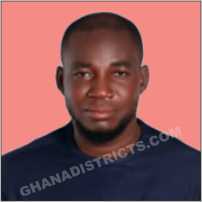

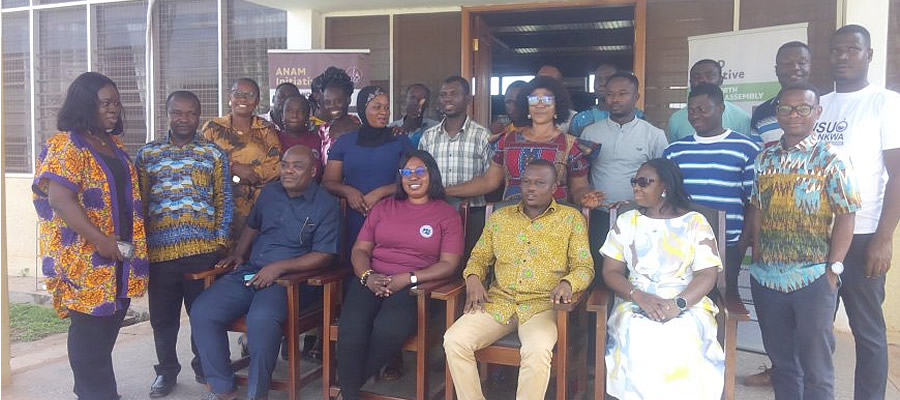
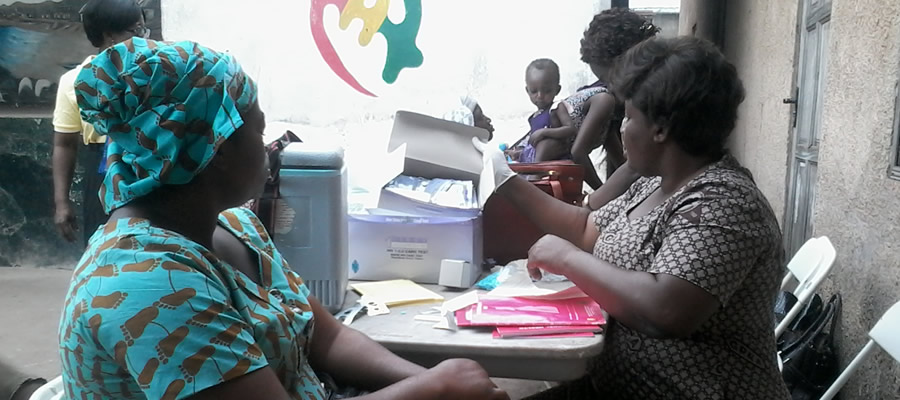
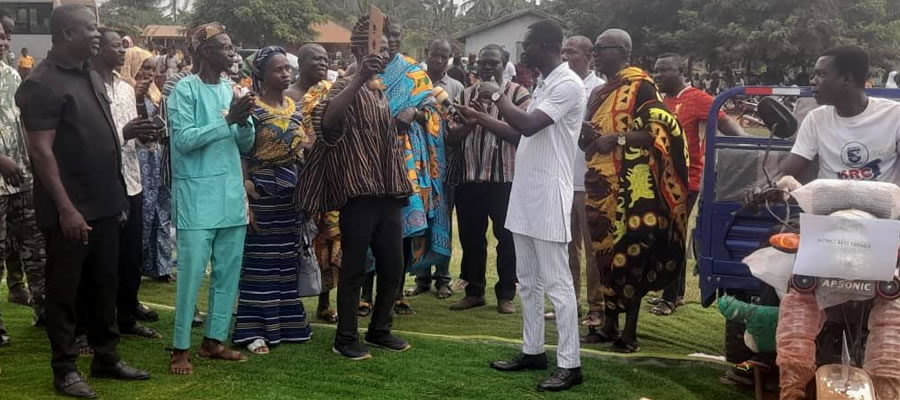
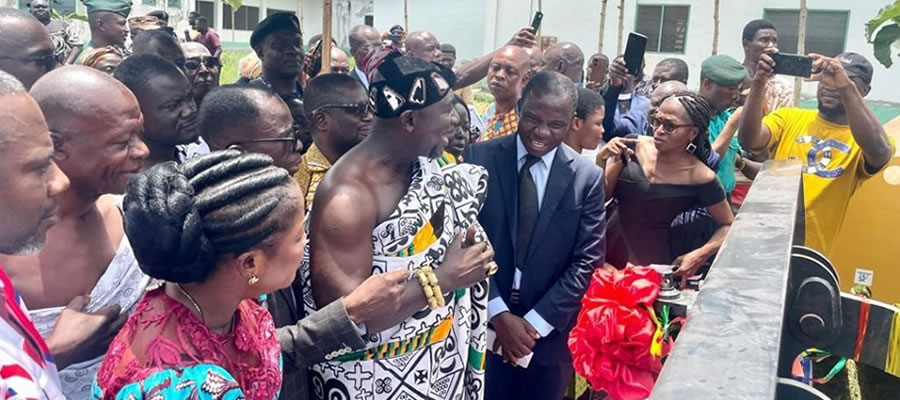






 facebook
facebook
 twitter
twitter
 Youtube
Youtube
 +233 593 831 280
+233 593 831 280 0800 430 430
0800 430 430 GPS: GE-231-4383
GPS: GE-231-4383 info@ghanadistricts.com
info@ghanadistricts.com Box GP1044, Accra, Ghana
Box GP1044, Accra, Ghana